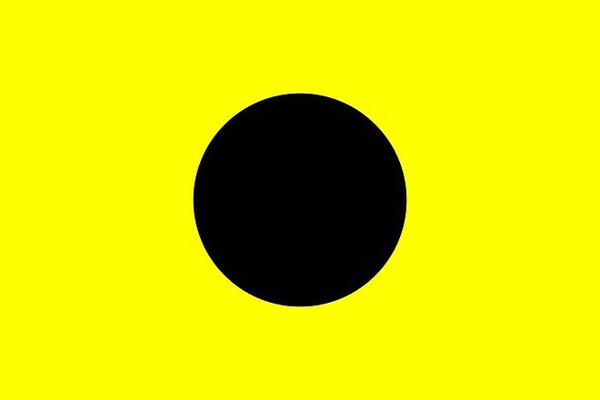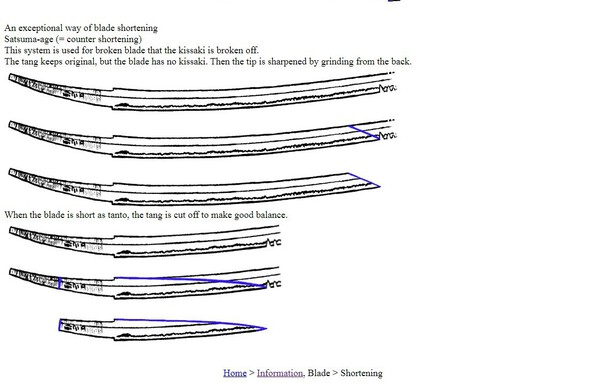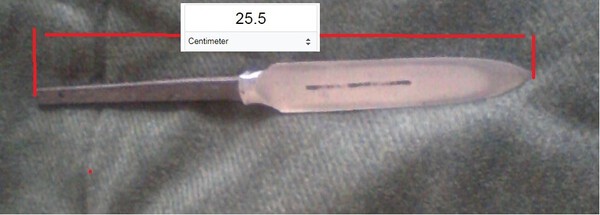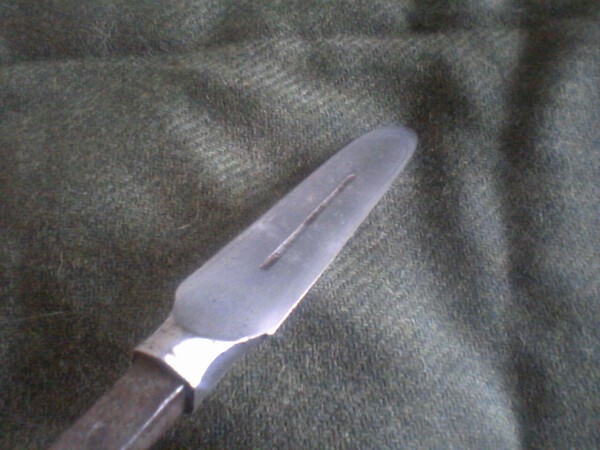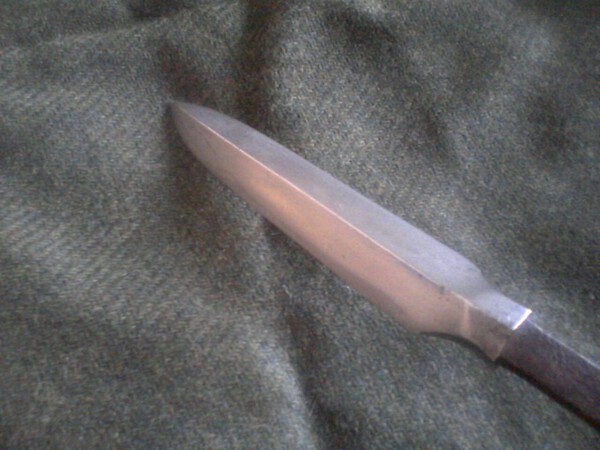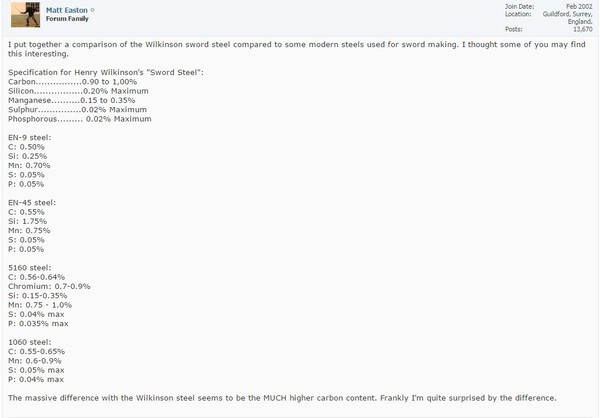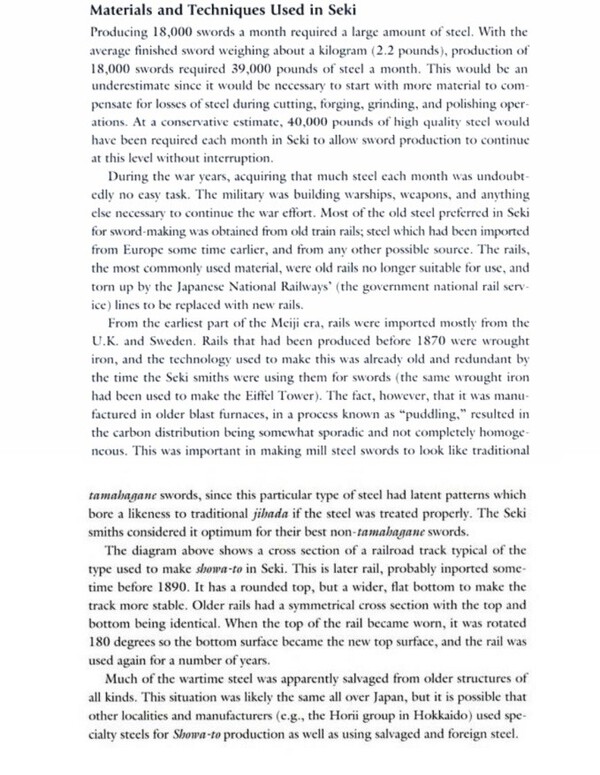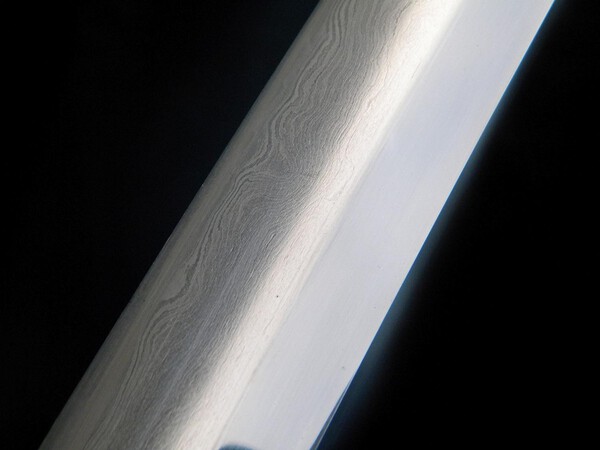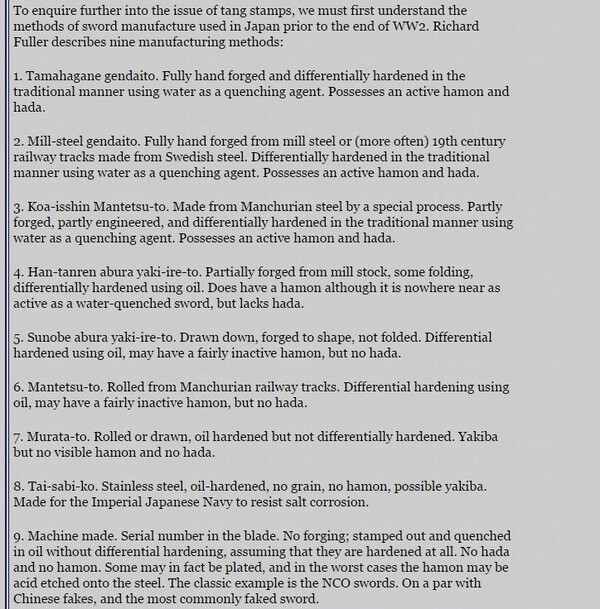-
Posts
1,686 -
Joined
-
Last visited
-
Days Won
12
Content Type
Profiles
Forums
Events
Store
Downloads
Gallery
Everything posted by Dave R
-

A question on Yari spear tip sizes.
Dave R replied to kusunokimasahige's topic in General Nihonto Related Discussion
... Or used to pull it back for another cast, like the Rope Dart. https://en.wikipedia.org/wiki/Rope_dart#:~:text=The rope dart is a,rope to pull it back. -

Type 98 Shin-Gunto with a Full Temper? Blade - Definitely Looks Old
Dave R replied to tbonesullivan's topic in Nihonto
I think it has been a Kyu Gunto in a previous life! -
Overall it looks righteous and WWII in date. It has had at least one refit/remount, but the tang while not typical Japanese is not the usual butchered job we see on the Chinese occupation product. The Ito has been redone and is not the original job, the ito gets damaged in use, or abuse as someone goes in search of "the jewels" in the hilt! Factory made blade of some sort at a guess,.... remounted NCO? Is the habaki copper or brass?
-

Good example for new buyers
Dave R replied to John C's topic in Auctions and Online Sales or Sellers
-
I would differentiate between PETA katana and the so called Island Swords. We know who made and carried the PETA blades, and they were an official embodied militia under Japanese command. Island swords, well who knows who made them, or if they were even meant to be anything other than souvenirs or the personal projects of bored servicemen!
-
The surviving mounts are well worth the money, get a "Tsunagi" made and a plain Fuchi and have a rebind of the Ito done, and you will have an excellent display piece of some value.
-

A Request for Translation ,but Please Don't Cry
Dave R replied to drac2k's topic in Translation Assistance
Or you could stay within tradition, a blade treated like this actually papered some years ago. http://www.ksky.ne.jp/~sumie99/suriage.html -
It's well made, but the lack of a mekugi is the killer.... no Japanese artisan is going to miss that feature. Better made than most wartime fakes, and showing real age. I would go for PETA, aka Pembela Tanah Air (Defenders of the Homeland) who carried Shin-gunto lookalike swords. Which I confess is my default go-to for aged well made not-Japanese katana-alike swords. A strong local tradition of sword making and an intent to carry and use in combat..... unlike the other "fakes" seen around. https://en.wikipedia.org/wiki/Defenders_of_the_Homeland#:~:text=Pembela Tanah Air (abbreviated PETA,possible invasion by the Allies.
-

A question on Yari spear tip sizes.
Dave R replied to kusunokimasahige's topic in General Nihonto Related Discussion
I think you have the right of it there, I did wonder if I had remembered it correctly. -

A question on Yari spear tip sizes.
Dave R replied to kusunokimasahige's topic in General Nihonto Related Discussion
The one I posted was bought a few years ago in 2016 and has been examined at the R.A. Leeds, and the mei is still visible on the nakago, so not cut down. The resident expert suggested "Kanahisi" (hope I remembered that one right) and a late 17th century date. Not all started long and ended short. Methinks it was made for a Te Yari or a Makura Mari for home defence, and probably quite inexpensively.... like the one below. -

A question on Yari spear tip sizes.
Dave R replied to kusunokimasahige's topic in General Nihonto Related Discussion
-

Rain in the Face with samurai sword???
Dave R replied to Peter Bleed's topic in General Nihonto Related Discussion
I have read elsewhere that a better translation of his name is on the lines of "His Face is Like a Storm!" At the First Nations events I have been to they regularly parade the Stars and Stripes, commemorating the capture of the flag at the Greasy Grass. -
Gentlemen, I think we have a determined troll here, who has already had a warning from Brian.
-

WW2 Japanese sword (Fukumoto AMAHIDE)
Dave R replied to Swords's topic in General Nihonto Related Discussion
I have to say that when I first came across references to blades made from rail tracks that I had my doubts, which is why I went searching for more information. Old style tracks had different compositions depending on when and where they were made, some were alloyed deliberately, some because of the ore content and some tracks were just high in carbon. Cast iron went through a puddling process to reduce carbon, and blister steel was wrought iron that went through a carburising process.... and was the main material for western blades until quite late! All of these went to make rail track at different times and places. Japan's industrial base was overstretched well before 1942 as the Chinese intervention just kept expanding well beyond expectation. I have no doubt at all that the Seki smiths would have preferred a different source of material. I also have no doubt that they would have been well aware of the different qualities and compositions of what they had to work with, and would do the best job they could with it, and it would have been a very competent job indeed. -

WW2 Japanese sword (Fukumoto AMAHIDE)
Dave R replied to Swords's topic in General Nihonto Related Discussion
A statement that I can agree with, and it's a conflation of unrelated facts that created the error. Mantetsu were a rail company,... Mantetsu made the Koa Isshin swords,... some swords were known to be made from scrap rails,... therefore Koa Isshin were made from scrap rails. Ipso Facto some people got it very wrong, and that's why I spent hours hunting down what was available about the real situation. Just to say though, not all Mantetsu produced swords were Koa Isshin! The problem for Ohmura san is that living in Japan he has no access to Showato, because they are counted as an illegal weapon there, and this does limit his hands on experience. Nonetheless he is a stirling source of information and a good reference source. What started me off on this search was a lecture at the Royal Armories Leeds, where the Curator Emeritus of the Oriental Collection (official title) made a clear statement with detail that "some" WWII Showato were made from reused rail track. I decided to hunt down some references for my own satisfaction. ( Btw, a comment elsewhere by another collector was that given the composition of the steel, if these blades could be water quenched then they would be fearsome cutters!) Regarding the above F&G list, it's flawed but still handy and generally correct, but I too would welcome an updated one.... Any volunteers? Is it a "sensitive land mine", only in that I am fed up of having to present the same evidence again and again and again, sometimes to the same ruddy people, who never present any evidence or references of their own other than "a bloke down the pub says" or "current wisdom". Making a reference to Ohmura is perfectly acceptable though, more than acceptable in fact! The man is a legend. -

WW2 Japanese sword (Fukumoto AMAHIDE)
Dave R replied to Swords's topic in General Nihonto Related Discussion
Oh, and this was the composition of those rails.... It's pretty good alloy steel because at the time they could not heat treat them as is done now. The other document is other steels composition in the trade. -

WW2 Japanese sword (Fukumoto AMAHIDE)
Dave R replied to Swords's topic in General Nihonto Related Discussion
You have to watch it with "conventional wisdom" as it's all too often a matter of fashion.... and uninformed opinion. I have had so many go-arounds about this that I am fed up of banging my head on the wall. So here we go, put up or shut up! Post a link or an extract to back up your statement, and if you cannot, then you have to accept the evidence. -
As written before, depending on where you are in the UK there are a number of Arms and Militaria Fairs. The bigger the fair and the further south the better the choice..... and the higher the prices! There are also UK based online dealers, which can save a lot of pain regarding Customs and Excise and shipping restrictions. I tend to buy off the dealers table after an in-hand inspection when it comes to blades, as there is so much that can be wrong with a blade regarding hidden and obscure defects.
-

WW2 Japanese sword (Fukumoto AMAHIDE)
Dave R replied to Swords's topic in General Nihonto Related Discussion
Lurking in the deep dark depths of Showato are some very odd blades, made I think for a more showy (see what I did there) taste. They nearly always cause uproar when they turn up, the Chinese product look so like them that I think they were the original inspiration. Also sometimes referred to as "Han Tanren", Usagiya reckon it's an invented term used by dealers to sell swords. I like them, but as I am often told all my taste is in my mouth. -

WW2 Japanese sword (Fukumoto AMAHIDE)
Dave R replied to Swords's topic in General Nihonto Related Discussion
To the best of my knowledge his atelier/factory made both Gendai and Showato to order, some of them very individual indeed. He might have bypassed the whole stamp system anyway. His "mixed metal specials" were stunning, and confuse a lot of people into thinking they are current Chinese. Do a search, there is a fair bit about him on this site. -

Photo of sword identification?
Dave R replied to Misconstrued's topic in General Nihonto Related Discussion
Just a reminder, this isn't Face Book, it's a site for serious collectors and those with a genuine interest in Japanese swords and culture. -

Photo of sword identification?
Dave R replied to Misconstrued's topic in General Nihonto Related Discussion
No, we are not calling katana junk, and I think that putting words in my mouth as you just have tells me and others, something about you..... Not something to your credit either. -

Photo of sword identification?
Dave R replied to Misconstrued's topic in General Nihonto Related Discussion
Times change, people move on and opinions and ideas do the same. Just a thought though, in the 19th century these were just old swords, bought and sold from Junk shops in Japan as well as in the West. I remember them selling for pocket money sums of cash until the bubble of the late 1970's. Would we value them the same if there had never been this "mass extinction" event? Would Nazi memorabilia have the same value if there had not been a similar mass destruction? As for why it happened, it was at the specific request of our wartime ally who had suffered dreadfully at the hands of the I.J.A. -
The itomaki is obviously wrong and badly done, as is the placing of the menuki,so no loss to remove it.



